This story developed gradually over many months and a number of visits to this site. I recount it as it unfolded.
False Start:
I began my first visit to the NongPlaDuk Station with a visit to the nearby Wat Khok Mo. Often temples are repositories for historical items. But we drew a blank there. No one we spoke to knew of any WW2 relics and they simply pointed us down the road to the railway station.
Second temple:
Months later I stumbled on to this PDF file that seems to be one of a series.
Prompted by this I visited the temple in downtown BanPong just a bit east of the current railway station. It is located in the curve of the tracks were they begin the westward trek to Kanchanaburi as it swings thru BanPong from NongPlaDuk. [see gallery below] Although spelled as Daun Dtum in Thai, it seems to be mainly transliterated as Dom Toom.
I was in search of the five items mentioned in the article:
- The bell made from a bomb casing
- The Abbot’s clock
- The IJA chedi
- The Abbot’s memorial
- The POW camp
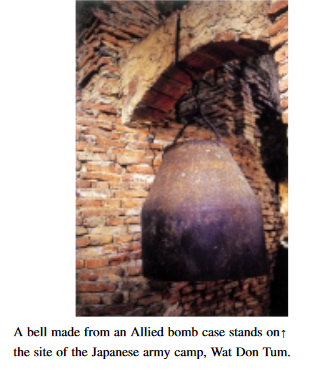
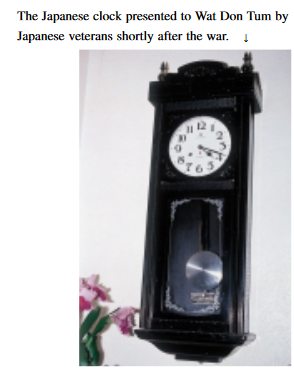
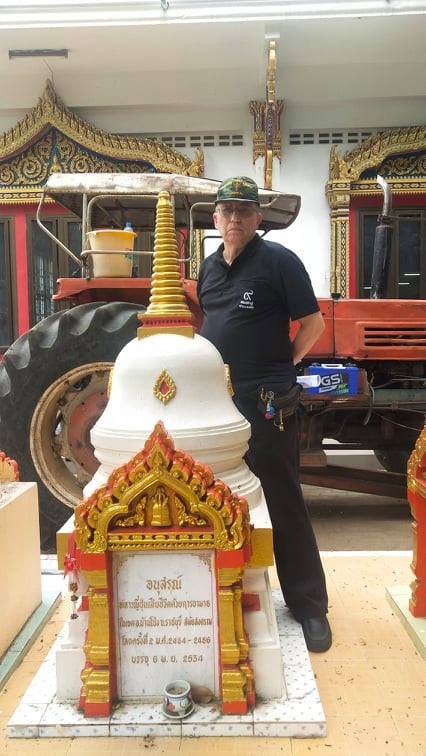
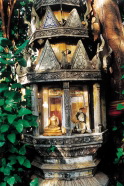
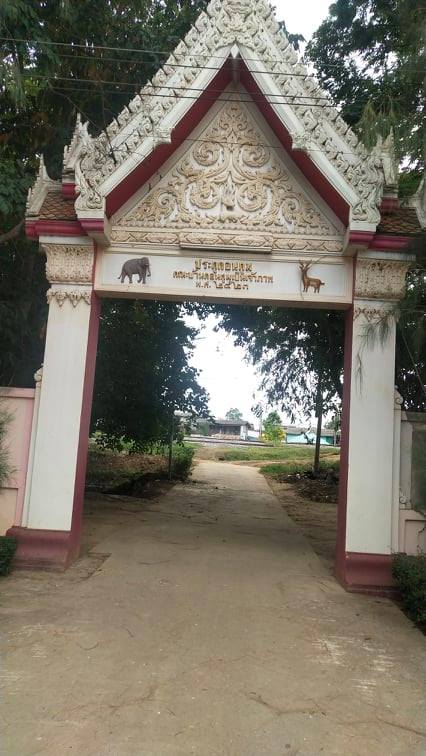
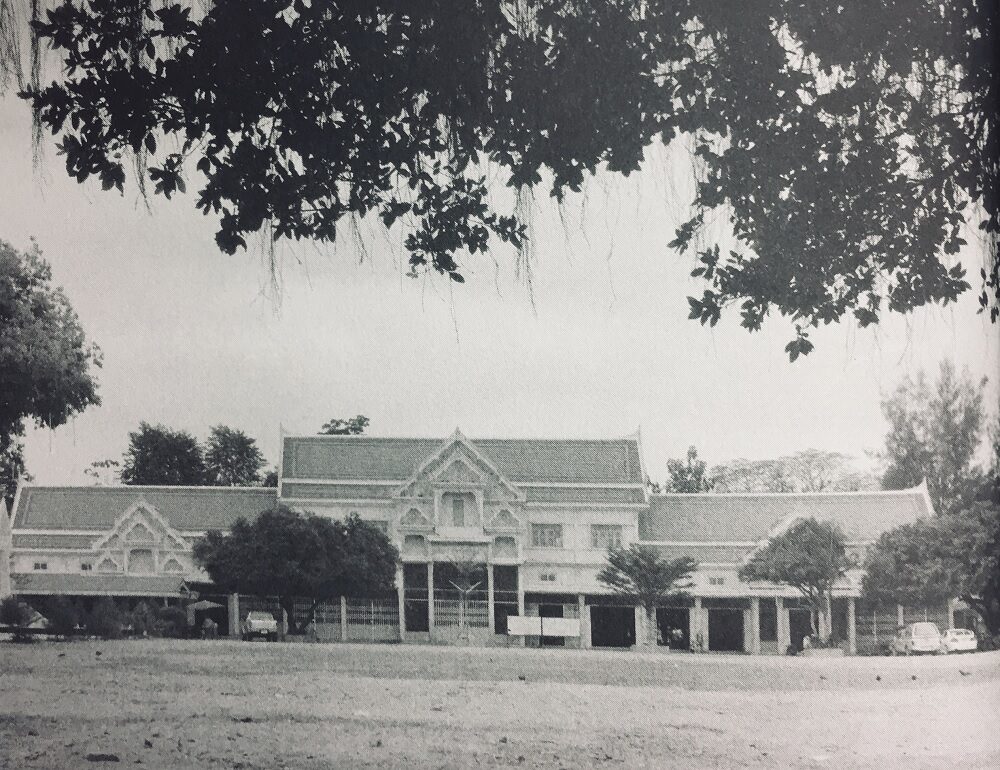
The Bell: The first monk we spoke to was a young fellow who knew something of the history but referred us to a more senior monk. Both told the same story: The bell had been STOLEN out of the temple some years ago! [INCREDIBLE !?!?]
The Clock: Neither monk knew anything about the clock. DEC 2021 UPDATE: the clock is located in the old Abbott’s quarters in the back of the temple complex, but there was no one available to unlock the door. Another trip will be needed. [see below]
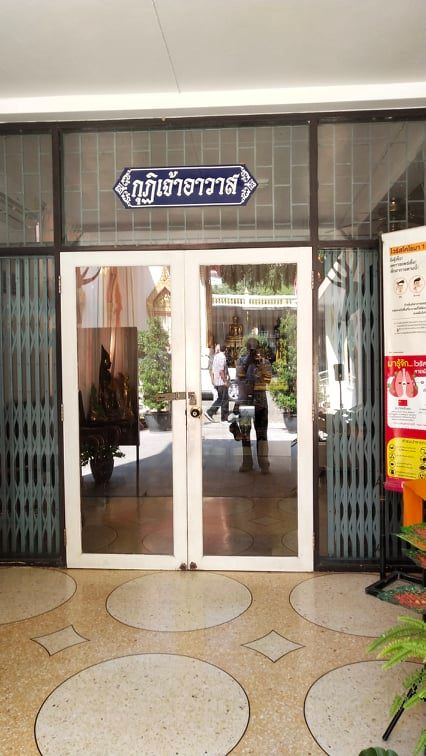
The Chedi: We found the chedi among a small group of like structures. There is nothing to set it apart from the many chedis that look very much the same. This temple was somewhat unique in my experience in that there were small groups of chedis scattered around the grounds and there were all of the same style: very short.
The Memorial: This proved to be more problematic. The caption in the article cites this as a memorial to the WW2-era Abbot (long since deceased) and its location on the ‘old site’. The more senior monk had no knowledge of the memorial per se. But he directed us to the ’old site’ as he knew it.
Modern development has split the temple grounds with a roadway. Tucked away about 500m north of the current temple site is a burial ground with dozens of standard chedis. The site is neglected and heavily overgrown. There were no building of any sort; only crypts and chedis. It seemed almost to be a mixture of Thai (chedis) and Chinese (family crypts) and possibly even other religions. Many of the graves were Christian-style single graves sites.
As we drove through this area trying to avoid fallen branches and creeping vines, we found ourselves in the far back corner of the grave yard. That is where we spotted first one, then a second and then a total of 4 small chedis completely overgrown and abandoned.
These all bore a striking resemblance to the photo in the article but were in a state of decay and disrepair. It seemed odd that if indeed these were connected to the former venerated Abbot that they would have been allowed to deteriorate so far! I suspect that what we found was in some way related but is not the actual item pictured by Prof Boggett.
[I will attempt to determine the whereabouts of the venerated Abbot’s remains on a future visit. Perhaps that will lead us to more complete information on this topic. The cited article notes documents and photos that MAY be present in his quarters if they were preserved.]
The Camp: As we spoke to the 2 monks we were practically standing on the open field that the article describes as the site of a POW compound. However, neither monk knew anything specific about a POW camp except that indeed there was one in the general area. The article clearly states that this central field was the actual site of at least part of the BanPong POW transit camp.
In short then, our first rather short visit this site was productive to a point, but warrants further investigation. The sheer fact that an item of historical significance was apparently STOLEN off the temple grounds amounts to a case of archeological LOOTING, IMHO!
It is going to take some considerable digging to uncover whatever story can be preserved out of the seeds in that article. I have learned that the author of this excellent essay is David Boggett of the Kyoto-Seika Univ and I am making inroads into finding the other articles in this series.
Part 2:
I found it to be quite a moving experience to stand on these tracks and know that thousands of Allied POWs and Asian romusha disembarked from the trains from the south at this very spot. They walked through this very gate and into the horrors of a transient camp.
This is also the point where the line coming from NongPlaDuk turns to the NW diverging from the rails that run to the south. What is now an open field in the center of the temple grounds is the place where the attap and bamboo huts were that housed them temporarily before they started their journey on to the TBR.
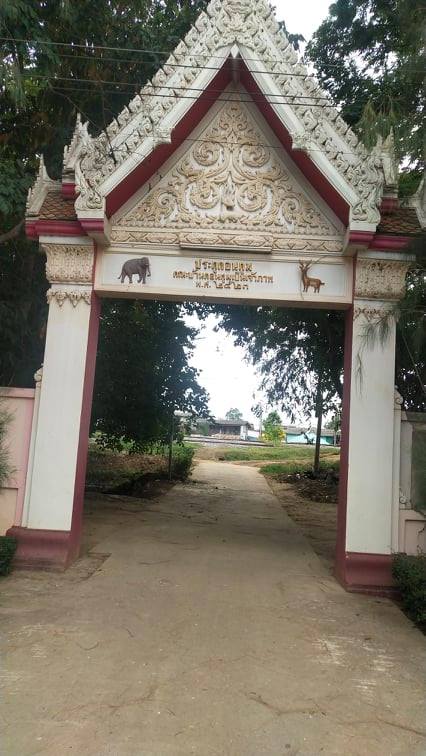
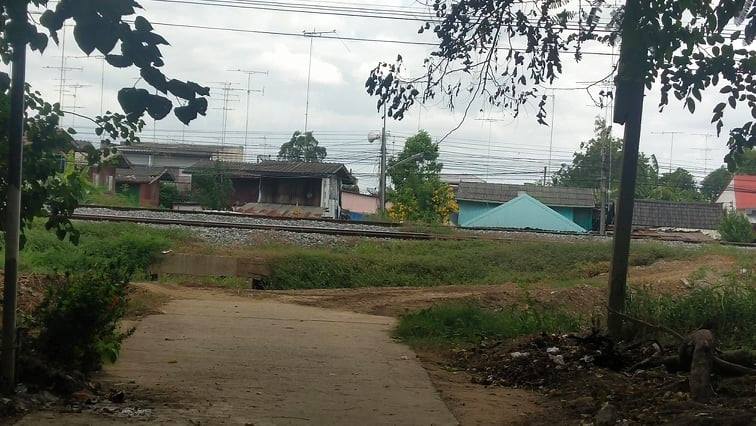
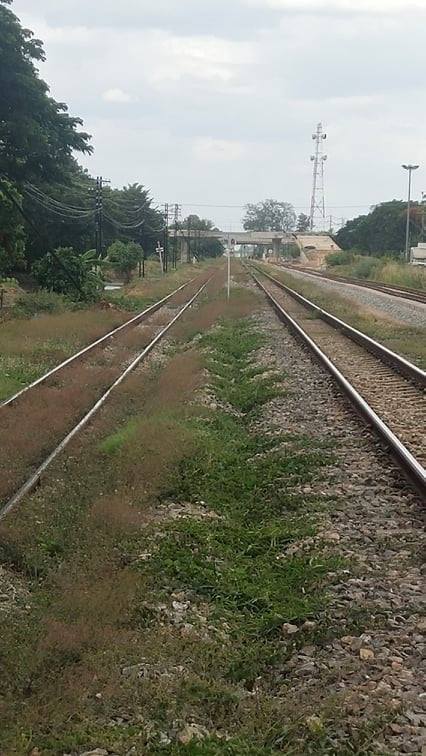
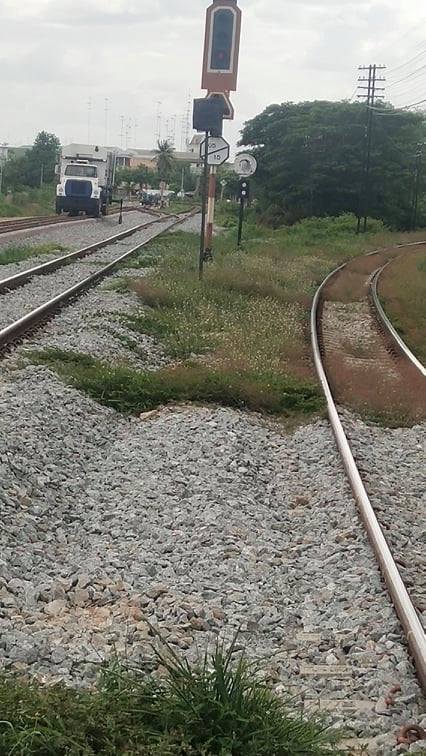
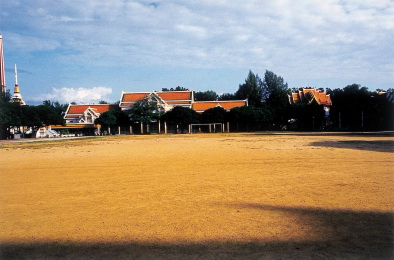
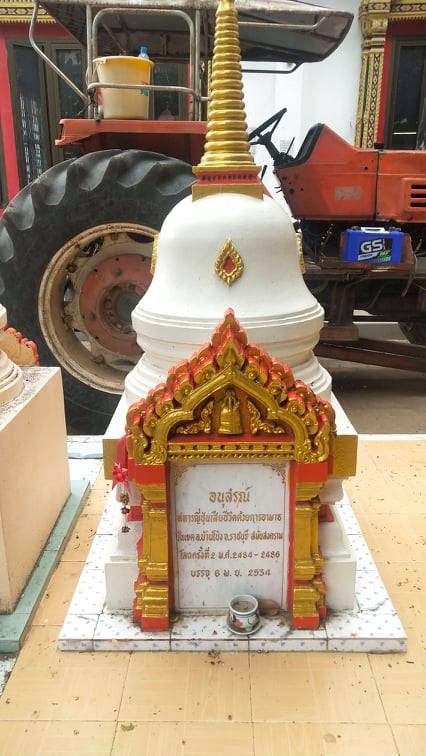
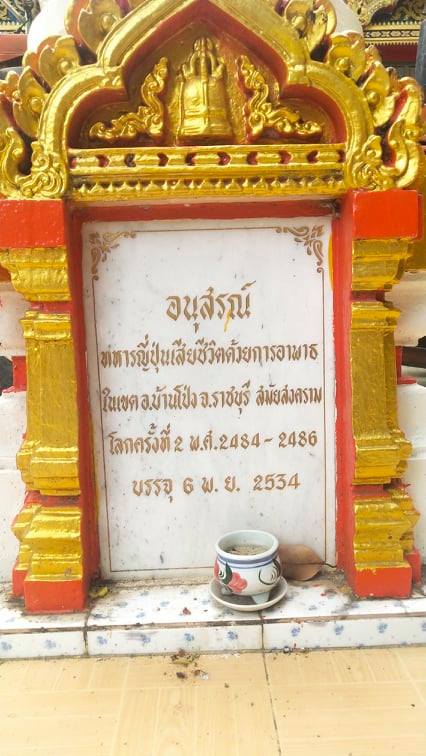
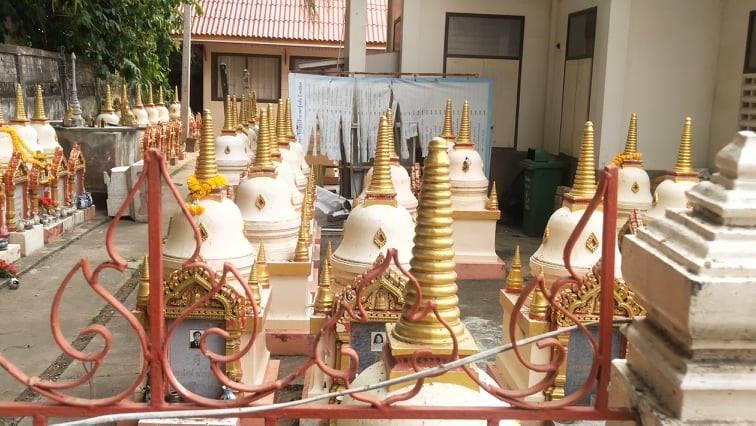
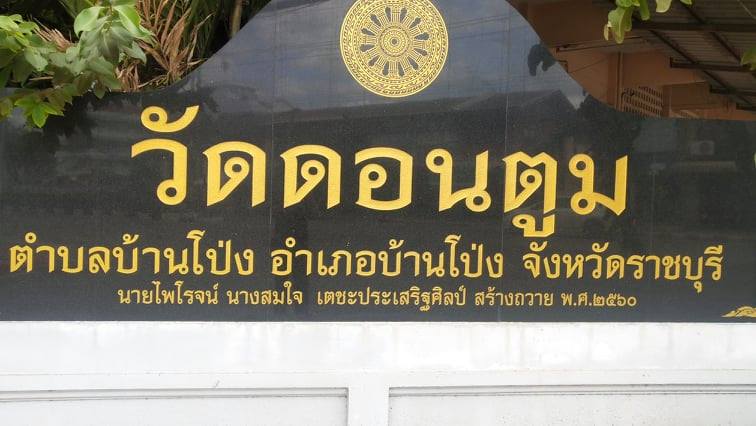
Part 3:
Expansion of the story of the IJA chedi (photo #5 above). It seems that in the late 1980s a group of former IJA soldiers approached the Abbot to gain permission to erect a monument to IJA soldiers who died in this area. Otherwise, why would they have chosen this particular temple for their memorial? Reference is made in the article about the CWGC Allied cemetery in Kanchanaburi (this temple is actually in the neighboring Province of Ratchburi) concerning the lack of ‘commemoration’ of the IJA dead. Per the article, there were no remains of any IJA soldiers to be interred so about 100 names were inscribed on bamboo strips in lieu of bones. The chedi’s inscription denotes the dedication date as 1991 (2534) but the range of dates for the IJA deaths is odd at 1941-43. I had presumed they were referring to soldiers who were KIA in Allied bombings of the area in 1945, but this is not specified in the article and the dates belie that. The inscription says: “Dedicated to the IJA soldiers who were KIA or died of disease in this area of BanPong during WW2 (1941-1943)”.
There is also mention of an actual building on the temple grounds referred to as the KATSUTA WAR BEREAVED FAMILIES bldg. [This will warrant further investigation.] DEC 2021 UPDATE: revisited the temple, could not find anyone who knew anything about a Japanese-related building. [see below]
JAN 2022 Update: After an unplanned meeting with the Abbot on 31 DEC during which he reiterated much of the information above as well as showing us previously unknown artifact (see Section 19), I returned the Wat to make a donation and provided him with the following explanation as to why a small group of Americans were interested in his temple.
Provided in Thai to the Abbot to explain our interest:
A contingent of 23 US personnel included 7 Merchant Marines from the SS Sawolka as well as others who had initially been left in hospital in Singapore as the various US groups passed through there were sent to the TBR as part of H-Force in May 1943. These US POWs were the only ones to travel to the TBR by train and therefore they would have passed through the Wat Don Toom transient camp. In addition, Flying Tiger pilot Charles Mott (technically a civilian) was shot down over northern Thailand but eventually found his way to the NongPlaDuk POW camp where he was put in charge of moving supplies by truck from there to Kanchanaburi.
This donation is made in their memory by members of the US Veterans of Foreign Wars Post 9951 Bangkok
JAN 2022
Per the Abbott, there is no separate building on the grounds built by the Japanese. The organization that Prof Boggett mentions simply contributed to the new ‘bot’ or main chapel that replaced the older WW2-era structure.
Part 4: future commodification ?
[see Section 26.2 for a deeper discussion of the concept of commodification]
IMHO, this site is one of the most poignant of the existing TBR sites. It was the point of arrival of thousands of Allied POWs and countless numbers of romusha. It is here that the ‘truth’ was revealed: that they had been lied to concerning the nature of the facilities and work that their immediate future held. And yet, almost no one outside of the true TBR aficionados know of its existence. The eminent Professor Boggett had no trouble in locating it based apparently on witness interviews that he conducted. Yet it is wholly ignored by the hordes of tourists who drive past it en route to Kanchanaburi. I, personally, do not believe that its location in the neighboring province of Ratchburi has anything to do with this. It is likely just too inconvenient and time-consuming for any of the tour buses to make the turn into BanPong to stop there. Plus, it would take some explanation on the part of the tour guides as to how this site plays into the overall TBR saga. No such explanations are seemingly needed nor provided at the War Graves Cemetery or the Bridge!
Not withstanding the fact that it is an active Buddhist temple in the midst of a moderately large city (Ban Pong), I could envision this becoming the center point of any effort to actually tell the story of the TBR. [Section 26.3 attempts to address the many issues that seemingly have precluded this from happening to date.] Both the temple and the city might benefit from the influx of tourists that such a center could provoke. Alas, for all the reasons enumerated in Section 26.3, such an endeavor will never come to fruition.
